
Online Exhibits
A Capital Market
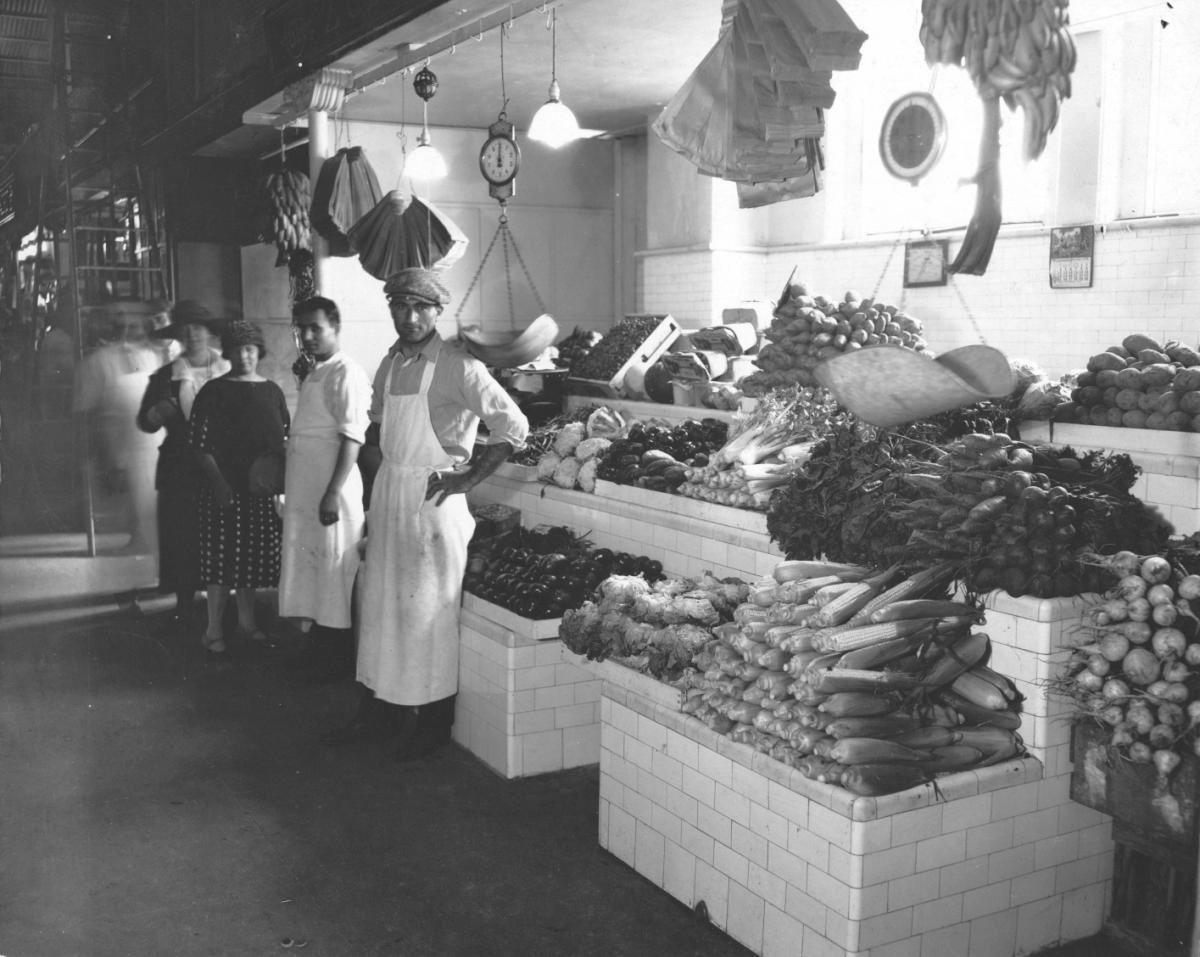 Located halfway between the White House and the United States Capitol, Center Market occupied valuable and symbolic space in the heart of Washington, DC. Center Market was well named; the market stood at the center of the physical city, but it also served as a social center. Individuals of different ages, classes, and races came together in the public marketplace. Throughout its history, Center Market was loud and lively. Center Market's vibrant and chaotic history can be recaptured through photographs, maps, and documents stored in the National Archives.
Located halfway between the White House and the United States Capitol, Center Market occupied valuable and symbolic space in the heart of Washington, DC. Center Market was well named; the market stood at the center of the physical city, but it also served as a social center. Individuals of different ages, classes, and races came together in the public marketplace. Throughout its history, Center Market was loud and lively. Center Market's vibrant and chaotic history can be recaptured through photographs, maps, and documents stored in the National Archives.
Freedom Train
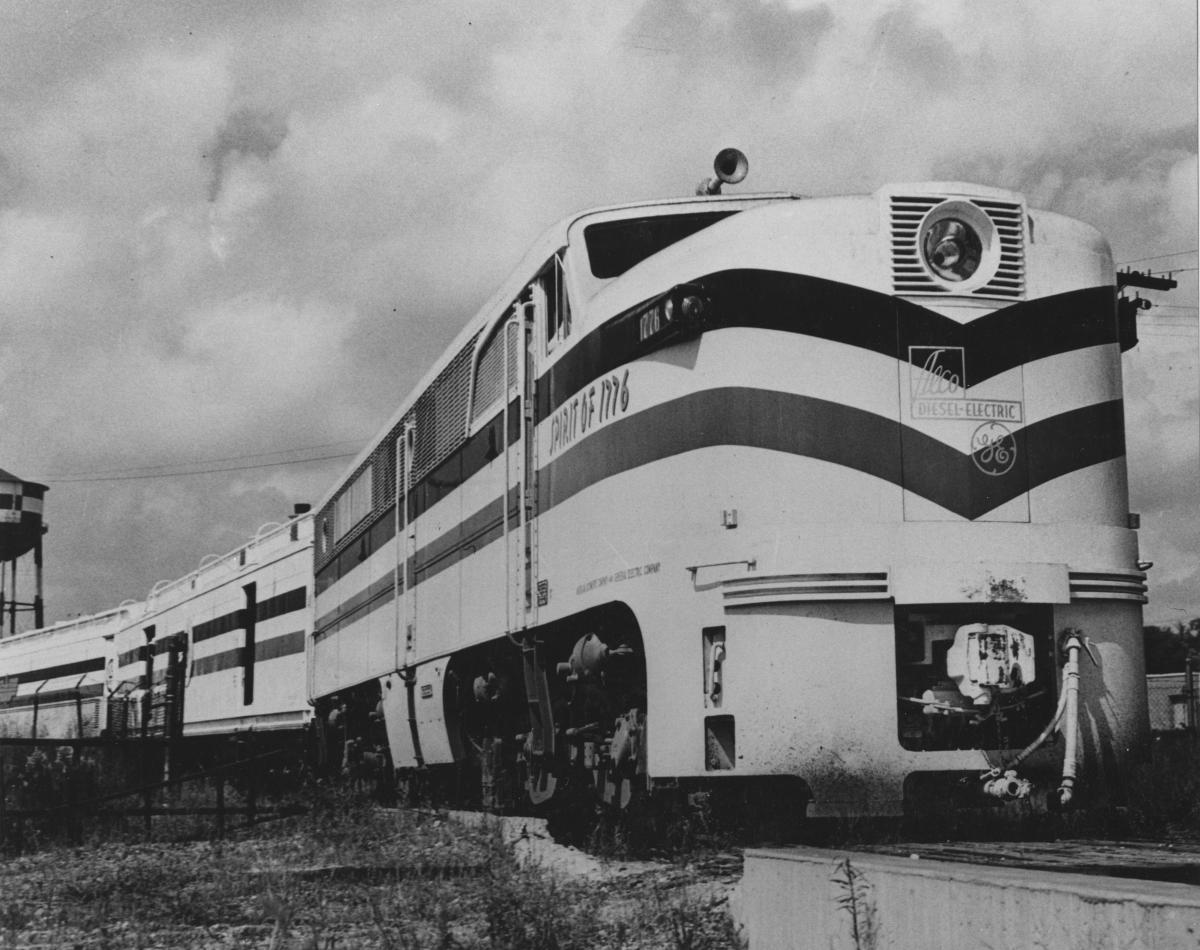 The Freedom Train was a seven-car train that traveled across the United States from September 1947 until January 1949. It was dedicated to the history of American democracy and contained some of the country's most priceless historical documents. The idea of the Freedom Train was to allow all Americans—from all over the country—the opportunity to view these important documents and learn more about our nation and its history. The Freedom Train was extremely popular—more than 3.5 million Americans came to view the documents it held.
The Freedom Train was a seven-car train that traveled across the United States from September 1947 until January 1949. It was dedicated to the history of American democracy and contained some of the country's most priceless historical documents. The idea of the Freedom Train was to allow all Americans—from all over the country—the opportunity to view these important documents and learn more about our nation and its history. The Freedom Train was extremely popular—more than 3.5 million Americans came to view the documents it held.
National Archives Building: A Temple to our History
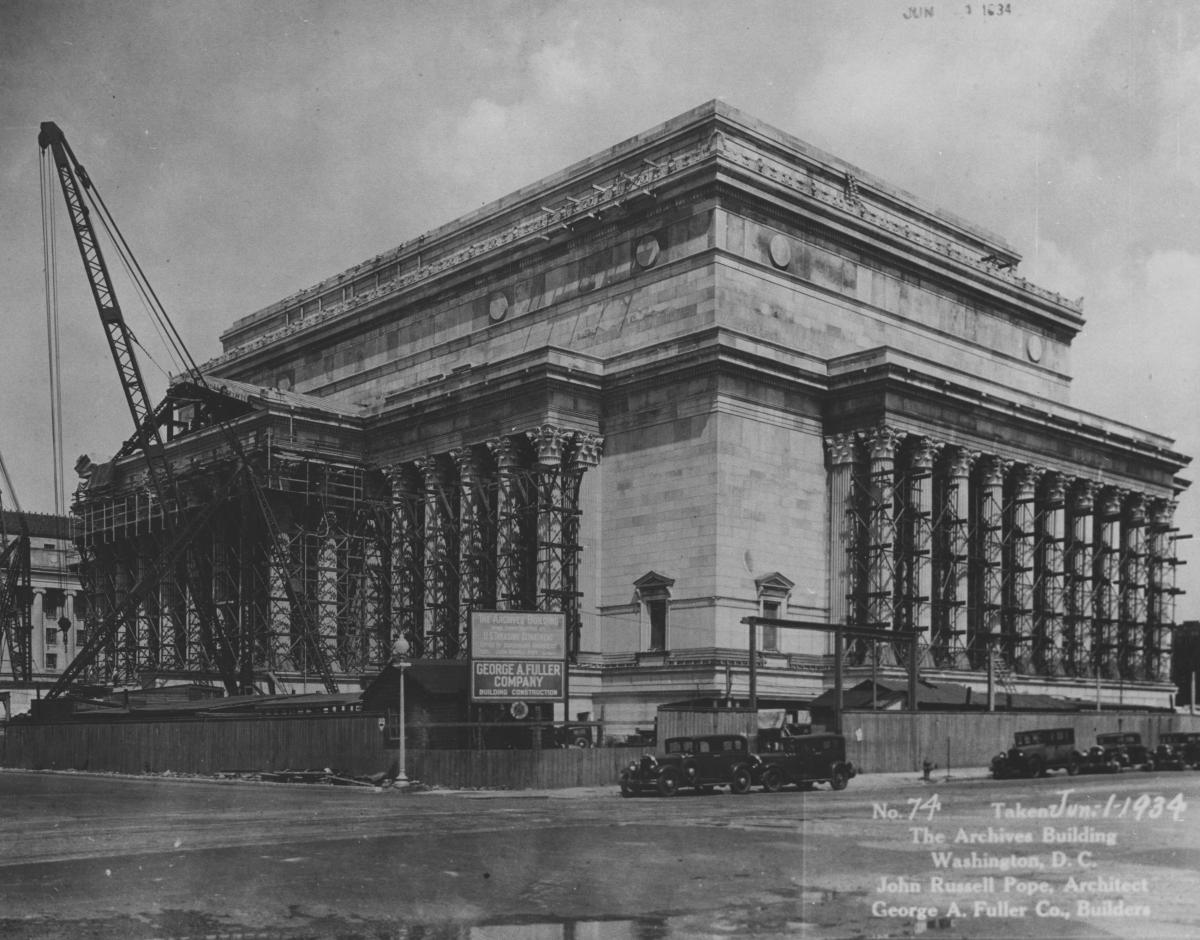 The National Archives is known for the history it holds, including the Declaration of Independence, the Constitution, and the Bill of Rights. But the history of the National Archives Building itself is just as representative of democracy as the Charters of Freedom. This exhibit explores how democracy and history have influenced the architecture of the National Archives Building.
The National Archives is known for the history it holds, including the Declaration of Independence, the Constitution, and the Bill of Rights. But the history of the National Archives Building itself is just as representative of democracy as the Charters of Freedom. This exhibit explores how democracy and history have influenced the architecture of the National Archives Building.
The National Archives: A Pioneer in Microfilm
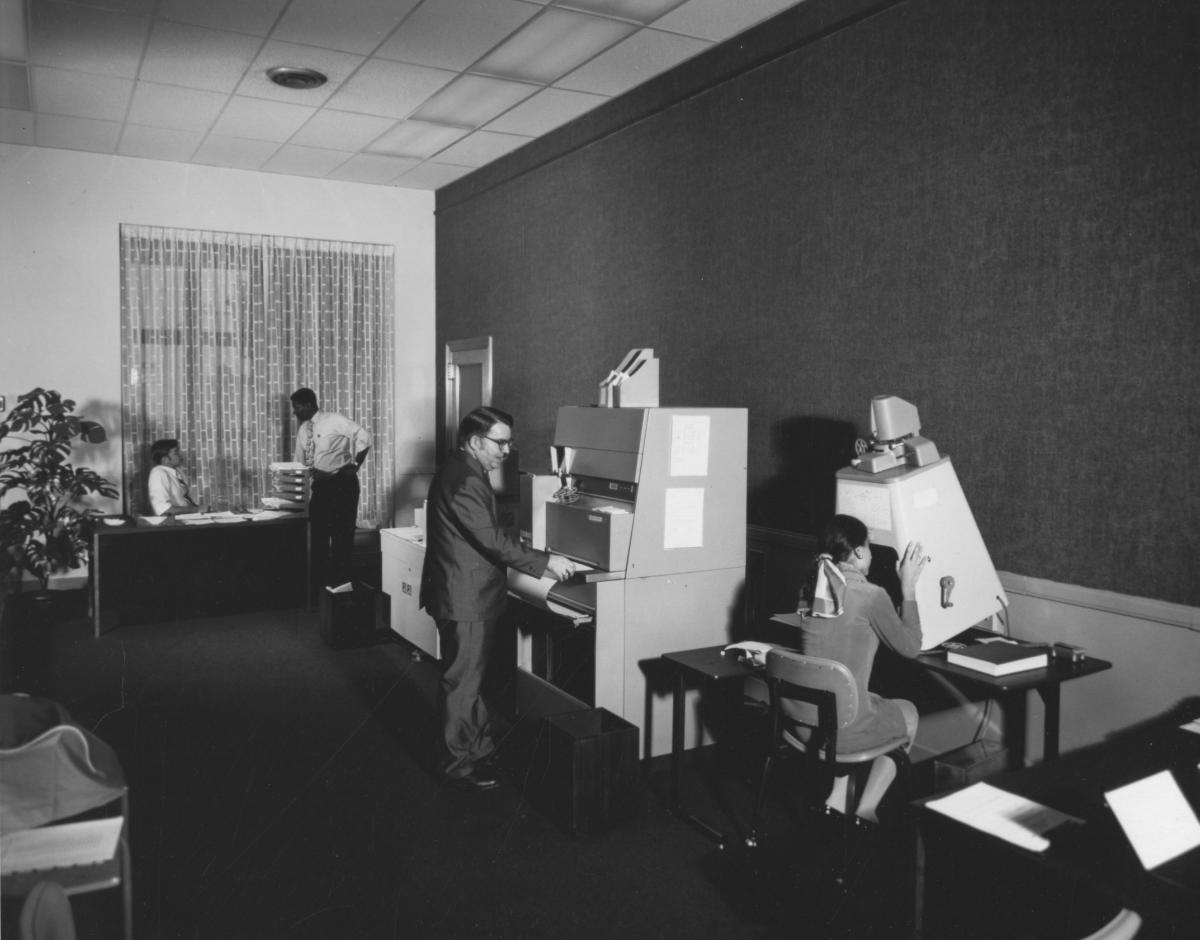 Beginning in 1936, the National Archives used microfilm to reproduce, preserve, and circulate its valuable holdings. With the encouragement of President Franklin D. Roosevelt, microfilm production increased greatly during World War II, and the National Archives soon became a leader in microfilming, encouraging international institutions to use the process. With growing interest in genealogy after ABC's 1977 popular television series, Roots, researchers anxiously flocked to the National Archives' microfilm readers, and today, the institution holds 4,000 microfilm publications. This exhibit explores the National Archives' nearly 80 year history with the process of microfilming.
Beginning in 1936, the National Archives used microfilm to reproduce, preserve, and circulate its valuable holdings. With the encouragement of President Franklin D. Roosevelt, microfilm production increased greatly during World War II, and the National Archives soon became a leader in microfilming, encouraging international institutions to use the process. With growing interest in genealogy after ABC's 1977 popular television series, Roots, researchers anxiously flocked to the National Archives' microfilm readers, and today, the institution holds 4,000 microfilm publications. This exhibit explores the National Archives' nearly 80 year history with the process of microfilming.
Carting the Charters
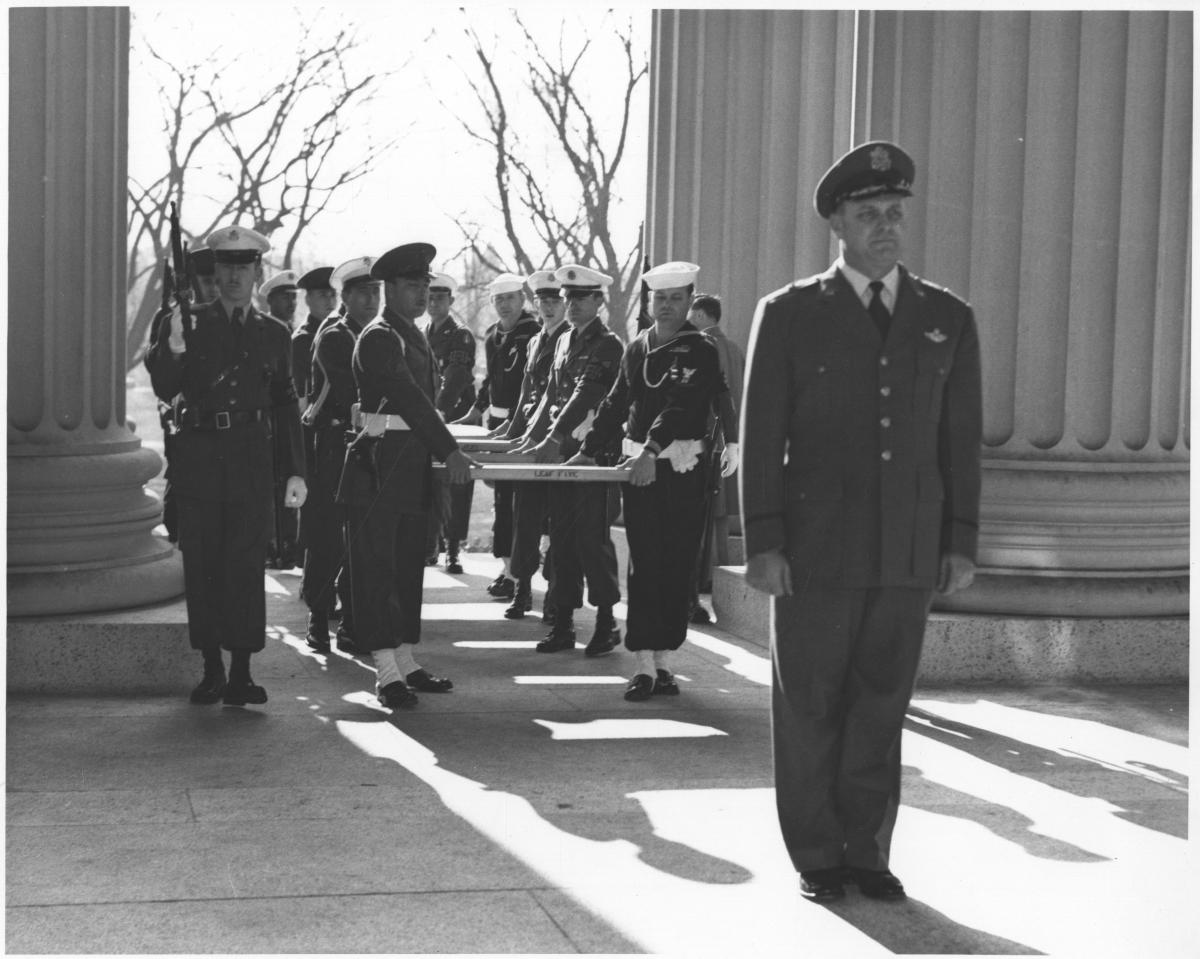 In 1952, the Declaration of Independence and the Constitution moved from the Library of Congress to the National Archives. This transfer was the culmination of decades of work and was celebrated with a parade and a speech by President Harry S. Truman. It reunited the Charters of Freedom and allowed the public view to all three documents at once. Today the documents are protected by special cases in the Rotunda for the Charters of Freedom, where they receive over a million visitors a year.
In 1952, the Declaration of Independence and the Constitution moved from the Library of Congress to the National Archives. This transfer was the culmination of decades of work and was celebrated with a parade and a speech by President Harry S. Truman. It reunited the Charters of Freedom and allowed the public view to all three documents at once. Today the documents are protected by special cases in the Rotunda for the Charters of Freedom, where they receive over a million visitors a year.
Leaving a Legacy: FDR and the Roots of the Presidential Library System
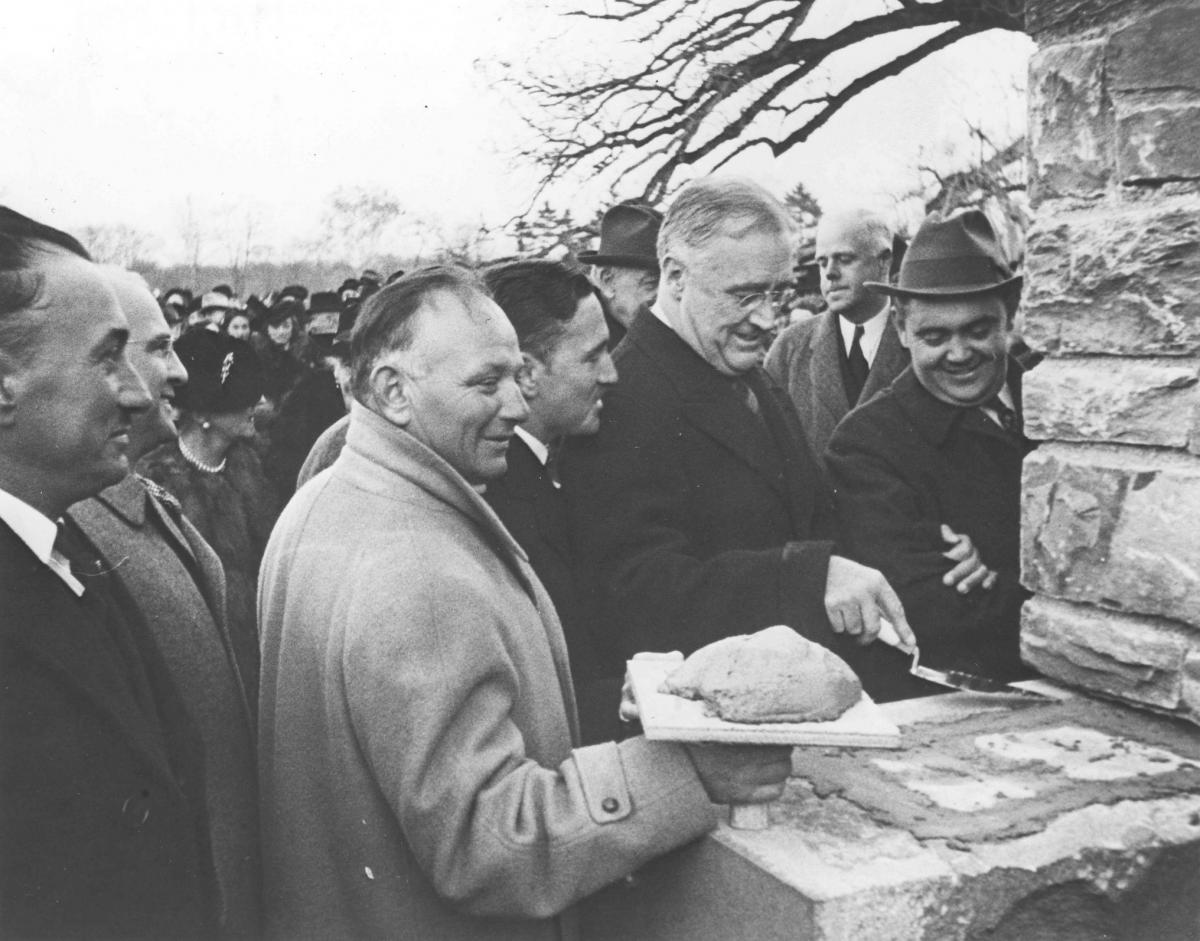 On December 10, 1938, President Franklin D. Roosevelt announced that he would be donating land from his estate at Hyde Park, New York, to house his Presidential papers in the to-be-constructed Franklin D. Roosevelt Presidential Library. In doing so, FDR set a precedent that expanded the scope of federal record keeping, and ensured the preservation of Presidential records for generations to come. This exhibit explores the foundation of the first Presidential library and the impact that FDR had on the Presidential Library System.
On December 10, 1938, President Franklin D. Roosevelt announced that he would be donating land from his estate at Hyde Park, New York, to house his Presidential papers in the to-be-constructed Franklin D. Roosevelt Presidential Library. In doing so, FDR set a precedent that expanded the scope of federal record keeping, and ensured the preservation of Presidential records for generations to come. This exhibit explores the foundation of the first Presidential library and the impact that FDR had on the Presidential Library System.
Inside the National Archives Building
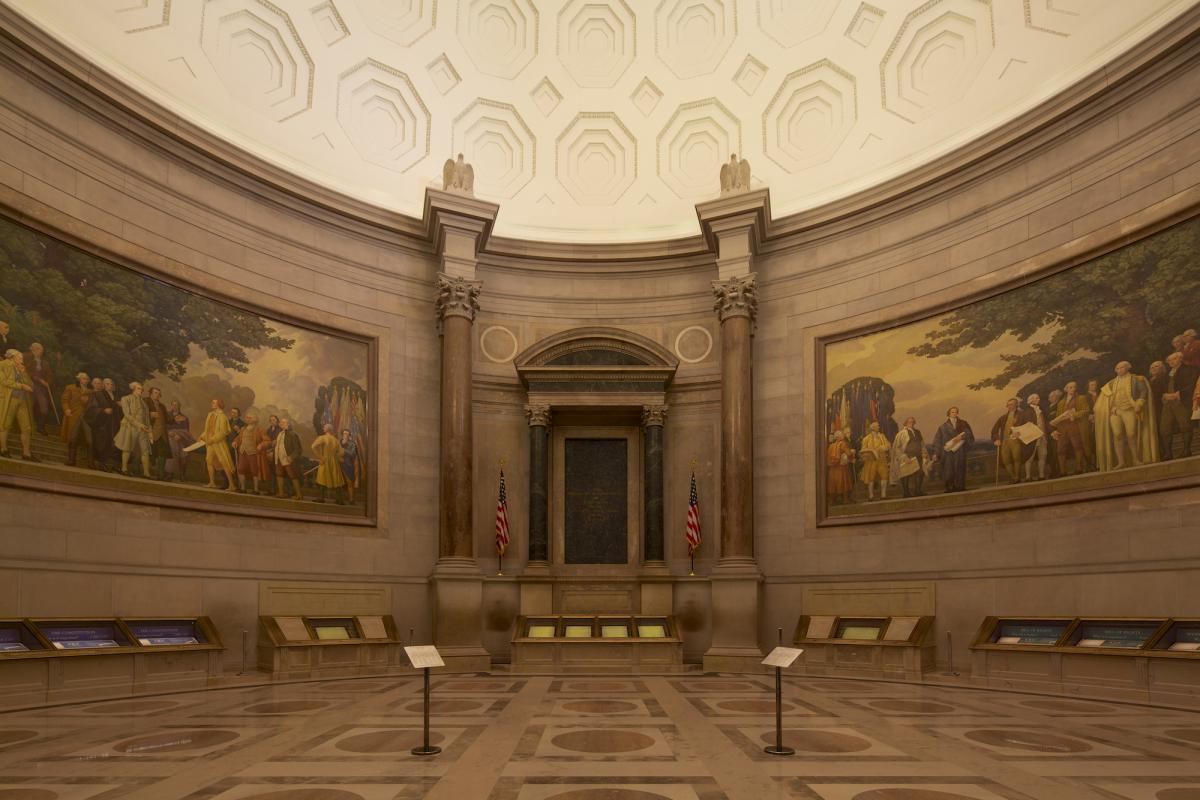 Although the larger-than-life statues, quotations, and reliefs on the Building’s exterior makes it clear Architect John Russell Pope designed the National Archives to represent history, knowledge, and freedom, subtle symbolism and purposeful design in the interior demonstrate the importance of the National Archives and its mission. This online exhibit brings visitors into the Rotunda and presents Pope’s symbolic design for the National Archives as a temple to American history.
Although the larger-than-life statues, quotations, and reliefs on the Building’s exterior makes it clear Architect John Russell Pope designed the National Archives to represent history, knowledge, and freedom, subtle symbolism and purposeful design in the interior demonstrate the importance of the National Archives and its mission. This online exhibit brings visitors into the Rotunda and presents Pope’s symbolic design for the National Archives as a temple to American history.
Creating the Public Vaults of the National Archives
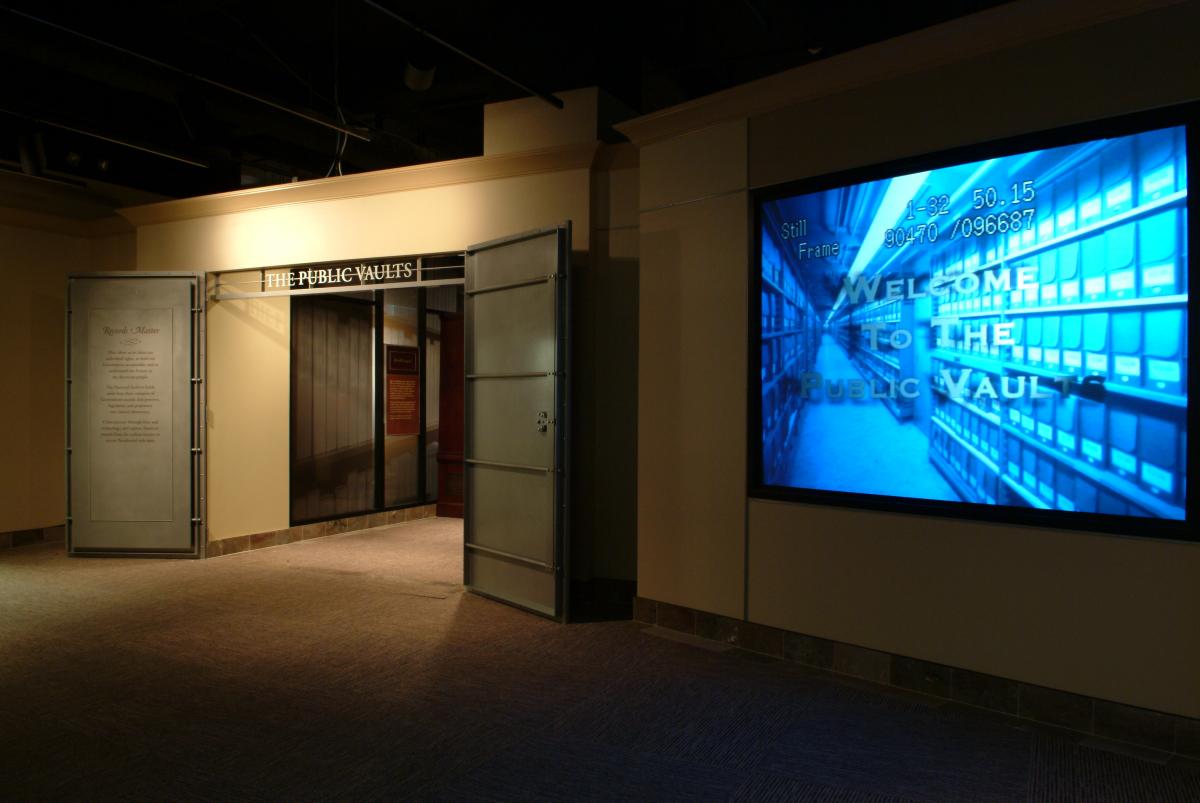 In the early 2000s, the National Archives undertook an endeavor to provide a behind-the-scenes look into the important work accomplished daily by the National Archives. This project became the Public Vaults, the permanent exhibit space of the National Archives, and this online exhibit tells the story of how the project was completed.
In the early 2000s, the National Archives undertook an endeavor to provide a behind-the-scenes look into the important work accomplished daily by the National Archives. This project became the Public Vaults, the permanent exhibit space of the National Archives, and this online exhibit tells the story of how the project was completed.
Beyond the Rotunda: Public Spaces in the National Archives Building
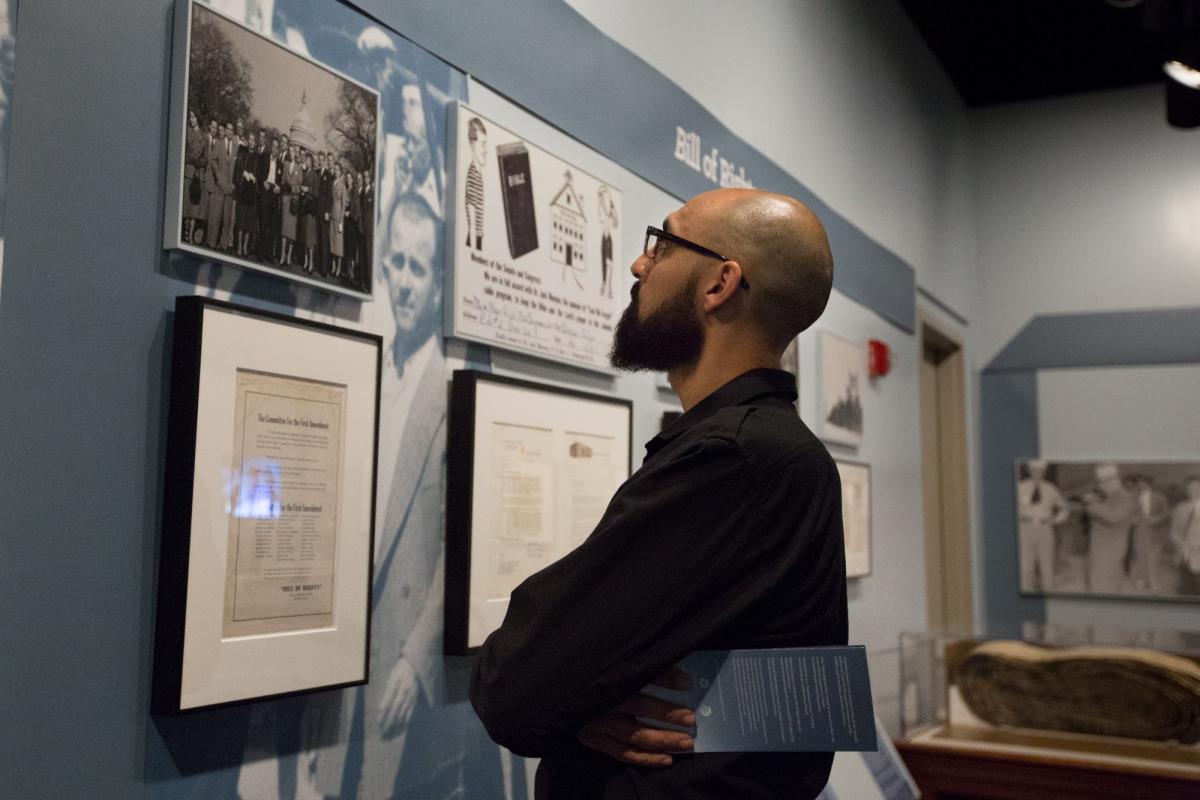 Beyond the Rotunda: Public Spaces in the National Archives Building, explores the various exhibits, research, and education spaces in the National Archives outside of the Rotunda for the Charters of Freedom.
Beyond the Rotunda: Public Spaces in the National Archives Building, explores the various exhibits, research, and education spaces in the National Archives outside of the Rotunda for the Charters of Freedom.
The "Old Navy" Prints and Watercolors
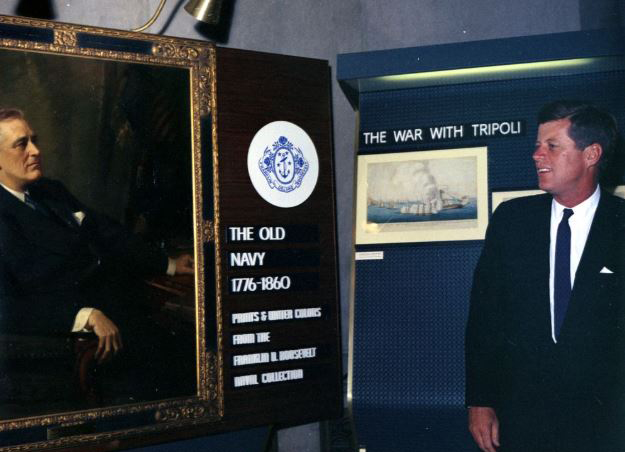 From the beginning of our nation, the Navy and its exploits were subjects of artistic depiction. This exhibit of Navy prints and watercolors is an adaption of a 1962 National Archives exhibit that encompassed the interests of two 20th-century Presidents, Franklin D. Roosevelt and John F. Kennedy.
From the beginning of our nation, the Navy and its exploits were subjects of artistic depiction. This exhibit of Navy prints and watercolors is an adaption of a 1962 National Archives exhibit that encompassed the interests of two 20th-century Presidents, Franklin D. Roosevelt and John F. Kennedy.
The Alexander Hamilton U.S. Custom House and the National Archives at New York City
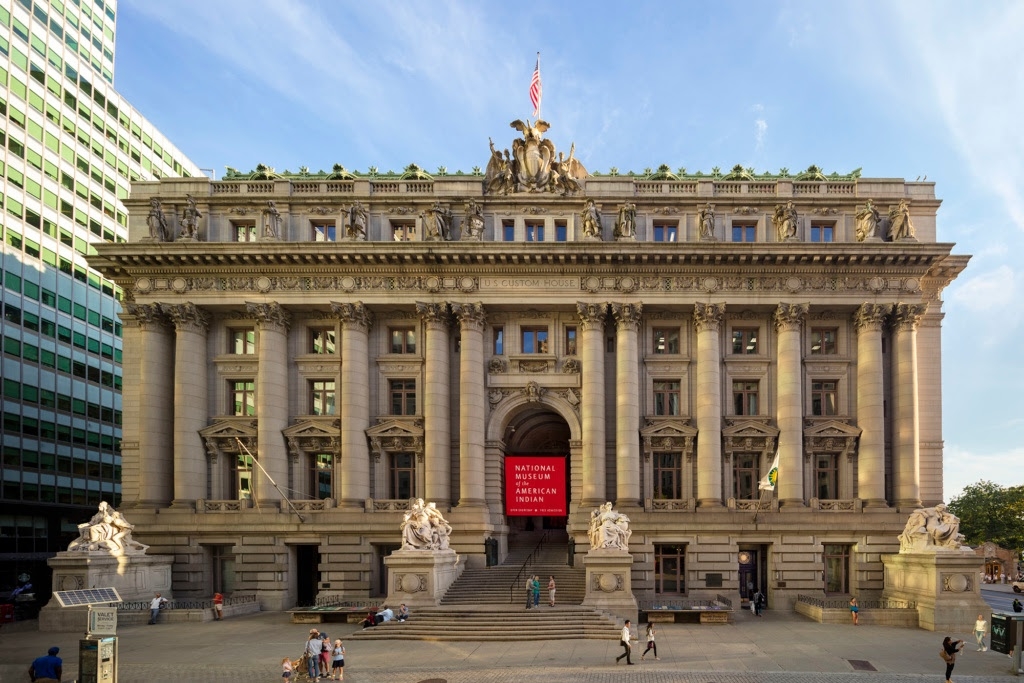 The National Archives at New York City is located in one of the most acclaimed buildings and most historic locations in Manhattan. Situated at the southern tip of the island overlooking the Hudson River, and next to the site of the oldest public park in the city, the National Archives at New York City resides in the architecturally renowned Alexander Hamilton U.S. Custom House. This exhibit explores that historic building and the National Archives at New York City's place in it.
The National Archives at New York City is located in one of the most acclaimed buildings and most historic locations in Manhattan. Situated at the southern tip of the island overlooking the Hudson River, and next to the site of the oldest public park in the city, the National Archives at New York City resides in the architecturally renowned Alexander Hamilton U.S. Custom House. This exhibit explores that historic building and the National Archives at New York City's place in it.
The History of our Neighborhood
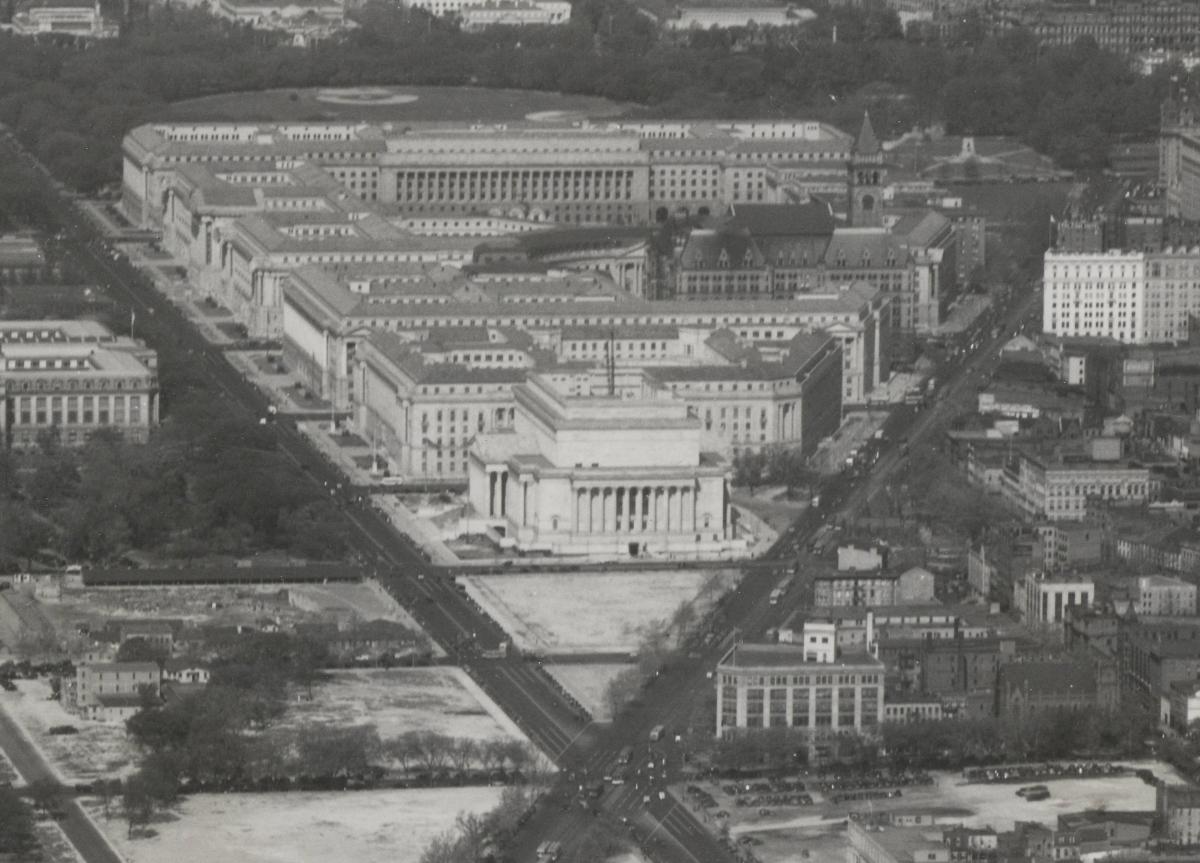 The National Archives Building in Washington, DC, sits halfway between the Capitol and the White House on Pennsylvania Avenue, but the building wasn’t always there. In fact, the Archives is but one thread of the colorful tapestry of this neighborhood’s history. This exhibit explores four centuries of our neighborhood’s rich history beginning in the early 1600s, when the Anacostans first established the Nacotchtank village in what is now the District of Columbia up to today.
The National Archives Building in Washington, DC, sits halfway between the Capitol and the White House on Pennsylvania Avenue, but the building wasn’t always there. In fact, the Archives is but one thread of the colorful tapestry of this neighborhood’s history. This exhibit explores four centuries of our neighborhood’s rich history beginning in the early 1600s, when the Anacostans first established the Nacotchtank village in what is now the District of Columbia up to today.
Presidential Visits to the National Archives Building
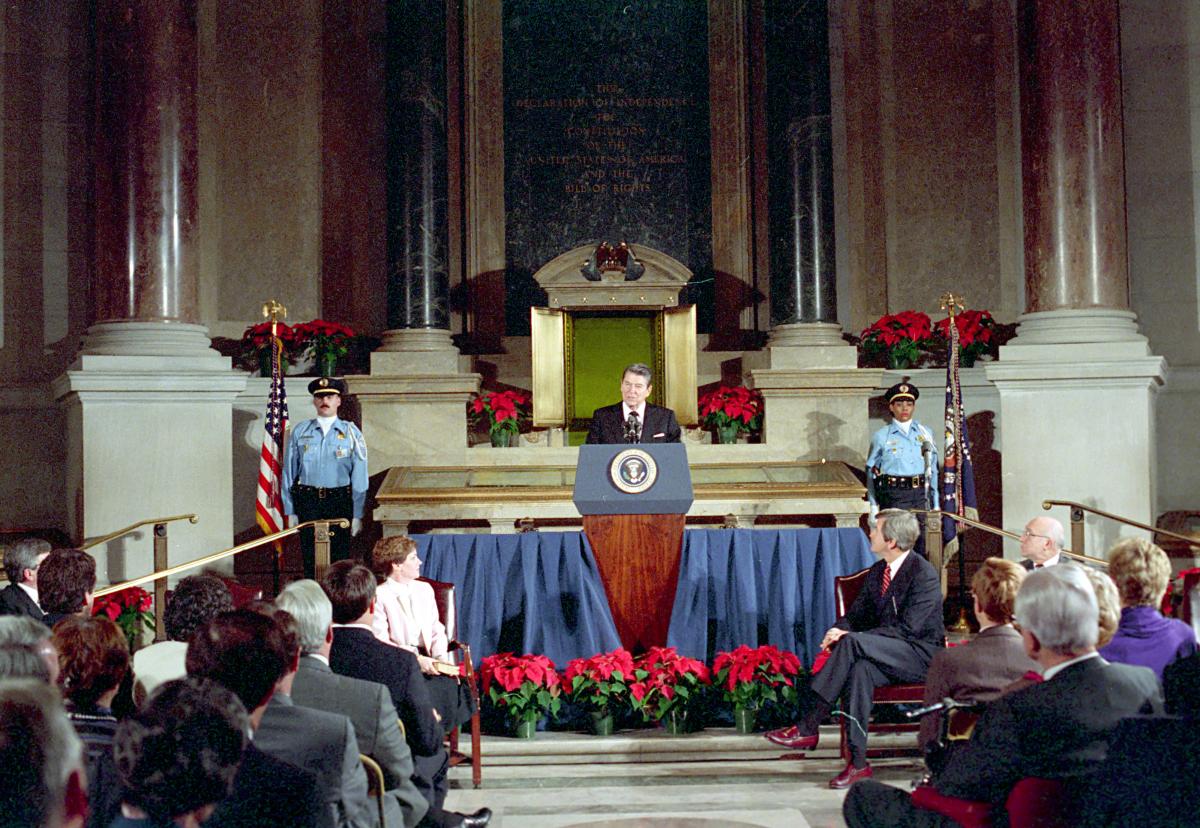 There is a long history of Presidential visits to the National Archives Building. Presidents come to commemorate notable moments in the nation’s history or to show how their administration’s vision for the country echoes the democratic ideals enshrined in the founding documents. This two-part exhibit explores almost 100 years of Presidential trips down Pennsylvania Avenue to the National Archives Building.
There is a long history of Presidential visits to the National Archives Building. Presidents come to commemorate notable moments in the nation’s history or to show how their administration’s vision for the country echoes the democratic ideals enshrined in the founding documents. This two-part exhibit explores almost 100 years of Presidential trips down Pennsylvania Avenue to the National Archives Building.
Presidential Visits to the National Archives Building: 20th Century
Presidential Visits to the National Archives Building: 21st Century